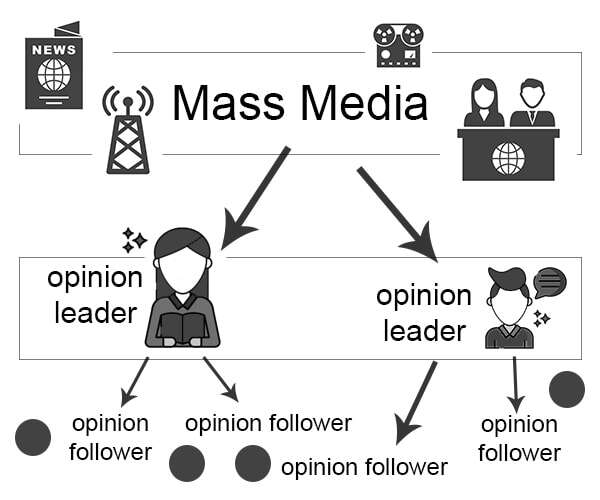
Intro
Secondary communication theory is an important theoretical framework in the field of communication, which has been used to explain the complex process of information dissemination and influence transfer. The theory focuses on how information or ideas are transmitted from the original communicator to the first tier of audiences (leaders of social groups, people with a certain degree of information influence), and then from these audiences to a wider audience, constituting a multilevel transmission of information or influence. The theory of L2 demonstrates how information can be disseminated at an unprecedented speed and scale, and the theory has far-reaching social, cultural, and commercial implications, which have allowed it to play a significant role in influencing the development of social media and Internet media during this period in today’s digital age.

Importance of secondary communication
The importance of secondary communication lies in the fact that it expands the scope and reach of information dissemination. The dissemination of original information is usually limited to the existing audience of the source, but through channels such as social media, information can be quickly disseminated to a wider audience, thus increasing the exposure of the information.
Areas of application
Secondary communication applies not only to messaging, but to a wide variety of content, including news, political opinion, advertising, entertainment and culture. Brands and marketing professionals often utilize secondary communications to promote products and services and attract more potential customers through user sharing and word-of-mouth on social media. This summer, I was involved in the operation of a privately owned and operated bed and breakfast hotel. In the beginning, we posted some photos or videos on Chinese social media, and then we would contact some bloggers with a large number of followers, and through their recommendations and online posts, the hotel would attract a group of guests. In this way, the theory of secondary communication becomes a clear example in reality.

Challenges and issues
However, secondary communication comes with some challenges and problems. First, the accuracy of the message may be lost in the communication process. Secondary communicators may misinterpret or distort the original message, resulting in a distorted message. In conjunction with my summer vacation experience, some bloggers’ photos are not of the hostel’s configuration, but their followers may mistakenly believe that the hostel treats them differently thus achieving the reverse effect. Secondly, information may become polarized on social media as people are more likely to share information that matches their point of view and ignore information that is contrary to it, possibly leading to an information cocoon effect.

Conclusion
Overall, secondary communication is an important phenomenon in the information age. Understanding the concept and impact of secondary communication is critical for individuals, organizations, and society as it shapes our information environment and culture.
References
- Sundar, S. S., & Kim, J. (2014). Interactivity and persuasion: Influencing attitudes with information and involvement. Handbook of the psychology of communication technology, 173-194.
- Shifman, L. (2013). Memes in digital culture. MIT press.
- Berger, J., & Milkman, K. L. (2012). What makes online content viral?. Journal of marketing research, 49(2), 192-205.


Based on the theory of secondary communication in the field of communication, the article explains how information spreads from the initial communicator to influential social group leaders and then to a wider audience. The role of secondary communication in expanding the reach and exposure of messages through social media is emphasised. Its use in news, political opinion, advertising, entertainment, culture and brand marketing is also presented, with an emphasis on user sharing on social media.
In addition, the article explores the challenges of secondary communication, such as the lack of information accuracy on social media and the potential polarisation of information, which leads to the information cocoon effect.
The article provides a logical and clear discussion of the importance of secondary communication theory in shaping information environments and cultures through practical case studies. This analysis is essential for individuals, organisations and society to understand today’s information-driven world.